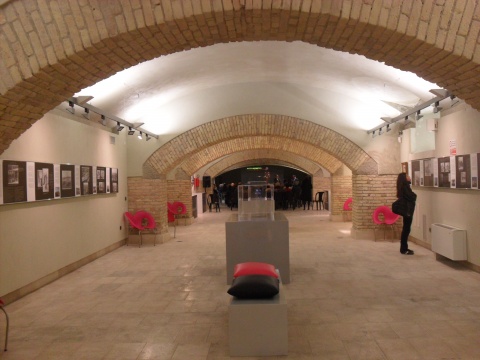The Historical Archive of the Municipality of Cagliari was established in 1326 and for the next two centuries in the Cathedral of the City, the place where the Civic Council met.
Over the centuries, documents have long remained unordered; in fact, the first provisions on the matter, issued under the Spanish Viceroys in 1660 and Savoy in 1738 and 1753, did not find practical application. The situation changed when Vittorio Amedeo III, on 10 December 1782, with two Royal Papers established the Archivist Office of the city.
The first reorganization of the documentation was carried out in 1896 by the illustrious palaeographer Silvio Lippi, then director of the Cagliari State Archive, to which the Mayor Ottone Baccaredda conferred the relative assignment.
In 1914 the materials now catalogued flowed into the new Palazzo Civico in Via Roma and at the same time the Municipality appointed director of the Archive Michele Pinna, an illustrious palaeographer and scholar from Cagliari; seven years later the Archive was flanked by the Civic Library, established in 1895.
On February 26, 1943 the bombings of the allied planes hit the Palazzo Civico hard, destroying the shelves and most of the archival and bibliographic documentation; the material suffered further damage forgotten for about three months between mud, dust and rubble.
The documentation was then collected and transported to the Boyl building of the Public Gardens, where it remained stacked until 1946, when the Municipality entrusted the management of the Historical Archive - Civic Library complex to Dr. Evandro Putzulu. This archivist is responsible for the recovery and reordering of both the papers and the bibliographic material.
The Archive complex, the Civic Library - which in the meantime had become a specialist library taking the name of the Municipal Library of Sardinian Studies - remained in this location until 2000, when the Municipality ordered its transfer to the headquarters in via Newton whose inauguration took place January 11, 2001.
Lastly, the Archive was transferred from the headquarters in via Newton to reopen to the public on April 30, 2011 in the MEM - MediaTek of Mediterranean.
THE HERITAGE
The historical archive by type, content and value of the preserved documentation assumes a relevance that goes beyond the mere local area, given the close ties that the city, capital of the Kingdom of Sardinia, maintained in the fourteenth and eighteenth centuries with the Iberian motherland. The preserved documents are sorted into four sections, distinguished according to a chronological criterion.
The FIRST SECTION or ANCIENT SECTION includes documents of fundamental importance from the historical and palaeographic point of view, collected in 831 folders. It is a conspicuous collection of parchments and real papers, membranaceous and paper codes that go from the fourteenth to the eighteenth century and which constitute an important testimony of the activities of the Cagliari town hall.
The SECOND SECTION includes documents ranging from the 17th century to 1870, collected and sorted in 802 folders and records.
The THIRD SECTION includes documents, collected in 507 folders and registers, relating to the period from 1871 to 1926. There is also an appendix, collected and ordered in 72 folders, consisting of the documentation relating to the municipalities of Pirri (1790-1870), Pauli Pirri (1871-1924), Monserrato (1853-1924) and Quartucciu (1865-1924), merged into the Municipality of Cagliari when in the fascist era they became hamlets.
Finally, the FOURTH SECTION, ordered in open series, consists of 143 registers, 51 envelopes, 248 files and 4 loose papers, and is related to the period from 1920 to 1964.
Over time, numerous funds received for purchases and donations have been added to this core of documents:
AUTOGRAPHERS FUND (2 folders)
PRINT FUND (198 units)
Private funds include:
FEUDAL ARCHIVE AYMERICH relative to the secc. XV-XIX, (318 folders and registers)
MILITARY STATION (26 folders)
TOP CARDS (2 folders)
VIVANET CARDS (4 folders)
GIORDANO CARDS (2 folders).
The Manuscript Funds are heterogeneous and rich in historical and cultural curiosities:
Sanjust (62 units), Ballero (19 units), Birocchi (8 units) and Martini (19 units).
The CARTOGRAPHICAL FUND (168 units) and the PHOTOGRAPHIC FUND (1776 units) relating to the nineteenth and twentieth centuries are of considerable importance for the study of architecture and town planning.
SEARCH - Sede espositiva archivio storico comunale
SEARCH - Sede espositiva archivio storico comunale
Largo Carlo Felice, 1
City
CagliariAdd new review
Your review will be visible after approval by the editors
To post a review you must be an authenticated user.
Log in with Social Login
